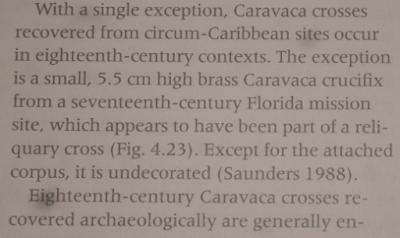Written by the TreasureGuide for the exclusive use of the Treasure Beaches Report.
 |
| Last Two Days Surf Predictions From MagicSeaWeed. |
I watch the surf predictions a lot. It is interesting how they change. Sometimes you'll start out with a prediction for a big surf, and a few days later it will disappear. I've commented many times on how often a big surf prediction moderates with time. I put together yesterday's chart (top) with todays.
You can see that the Sunday prediction remained virtually unchanged. The latest chart, however, shows an pretty nice increase starting Thursday. The previous chart shows a smaller increase not starting until Friday. As I've pointed out before, those types of predicted increases often decrease with time, but that doesn't seem to happen as often as in years past. I think the model they use has been improved.
The bottom line is that we are supposed to have a peak of about 3.5 feet today with another bigger surf possibly coming later in the week.
The north wind I noted yesterday caused some erosion. I'll comment on that more below.
---
Saturday afternoon I went out to the beach, and once again forgot to take my phone and camera. John Brooks looked very much like it did on January 8 when the previous front came through.
At John Brooks there was a little cut that ran a long way both north and south. It was one of those that had small peaks and dips as shown below.

It was almost exactly like it was on January 8. On January 9, the cuts got a little bigger, as I suspect they again last night.
The slope there didn't look hugely promising, and I wanted to check farther south, where it also cut on January 8. I figured it would cut similar to the way it did on Jan. 8 too, and it did. It looked very much like the photo shown below. That cut ran for a few hundred yards and varied from like 6 inches to two feet, mostly running around one foot.
As I expected, there were some crusty coins below the slope in front of that cut. They were all, except for one recent drop, deep. The coin line was near or at the maximum depth that the Equinox could reach. It provided an excellent study.
As I've explained before, a coin line has length, width and thickness, and it can be either deep or shallow. I remember once talking about a deep coin line I found at Frederick Douglass that most people were passing over. It was definitely there, but due to its depth was giving only very faint signals.
When you get a coin line that is buried under a good depth of sand like that, it is difficult to figure out if the shallower coins were previously removed or if the coin line is deep because it got covered at an earlier date and had been hiding for a good amount of time. In these two cases, I think it was the later.
I dug more quarters than all other coins together. There were only a few pennies, two nickels and no dimes. That is an unusual distribution. Usually, you will find more pennies. So why was I finding mostly quarters.
Well, they were all crusty. They had all been on the beach a while, except for one shiny penny. And they were all petty deep, and many gave faint and inconsistent signals. They were near or at the maximum depth that could be detected by the Equinox under the current conditions. I don't know how many targets were beyond the reach of the Equinox and might revisit the site and go over the same area with a deeper seeking detector.
Unfortunately, I didn't have much time. I knew there were more coins than I had time to dig so I moved quickly and skipped some of the deeper coins that gave only faint or inconsistent signals. Almost every coin was deep and took a while to recover. Due to the depth, they were all taking multiple scoops to recover.
Normally I would not skip faint signals, but in this case, I just didn't have much time and figured if things developed the same way they did the last time when a similar front came through, conditions would improve a little the next day and I'd be able to recover those that I skipped today. That might not work out, but under the circumstances, I took a chance.
I've described coin lines before at the introductory level, and when I started doing this post was thinking of doing a more advanced or detailed analysis of coin lines, but I've already talked a lot today and will get back to a more detailed analysis sometime soon.
I plan to get out to the beach again today, and will see how things have developed. That will add to the discussion. From what I saw yesterday, beach conditions have improved slightly. I'll see if that is continuing or not.
---
Yesterday I mentioned the visible light spectrum. There are real cloaking systems that actually bend light and make things invisible.
Here is an interesting link.
Real Invisibility Cloak Tech - 10 Amazing Invisibility Technologies - YouTube
Think of that in relation to some of the unexplained and paranormal phenomena such as ufos that you see in videos - those that aren't complete frauds.
---
Happy hunting,
TreasureGuide@comcast.net

















































